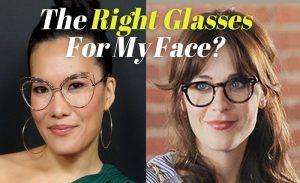Aging sneaks up on all of us. One day you’re reading tiny print on the back of a cereal box without a second thought, and the next you’re stretching your arm as far as it’ll go or handing the menu to someone else. If this sounds familiar, you’re in good company—eyes change with age, just like the rest of us. The trick? Knowing what’s normal, what’s not, and how to keep enjoying the world in sharp, vibrant color.
Let’s cut through the mystery (and a little bit of the worry) when it comes to vision and getting older.
Presbyopia: The Case of the Ever-Longer Arms
Let’s start with the classic: presbyopia. It’s that moment when you realize you need more light, bigger print, or reading glasses to do the crossword. This usually starts in your 40s or 50s and is completely normal. The lens in your eye gets a little less flexible, so focusing up close is harder. Readers, more light, and patience are your new best friends.
Dry Eyes and Fading Tears
Ever wonder why your eyes feel scratchy or tired after time at the computer, or why the wind gets to you more than it used to? As we age, our eyes often make fewer tears—plus, the tears themselves can change. Suddenly, dry eyes and blurred vision become more common. Humidifiers, artificial tears, and talk with your eye doctor can help a ton.
Colors, Contrast, and Night Vision
Have you noticed colors seeming less “zingy” or night drives getting trickier? That’s all part of the process. The lenses in our eyes yellow just a little with time, so colors fade a bit. On top of that, your pupils don’t open as wide in the dark, so you might find yourself squinting more on nighttime walks or car rides. Some people in a senior living community even avoid night driving altogether. It’s smart to listen to yourself; there’s zero shame in calling it an early night!
Floaters and Flashers
Those little squiggly “worms” that drift into your field of vision? They’re called floaters, and while most are harmless, a sudden shower of them (especially with flashes of light) can mean something serious—like a retinal tear. Don’t panic, but do get checked out right away if it happens. Better safe than sorry.
Common Eye Conditions to Watch For
Aging eyes are more prone to a handful of classic conditions. Cataracts (cloudy lenses making things look blurry), glaucoma (high pressure causing vision loss over time), and macular degeneration (troubles with the center of your vision) all get more common with age. Most of these come on slowly and can be managed if caught early. Regular eye checks—every 1-2 years, or sooner if something changes—are the best way to dodge trouble.
Small Changes, Big Help
A few lifestyle habits make a bigger difference than you’d think: Wear sunglasses (even on not-so-sunny days), eat leafy greens and colorful veggies, don’t smoke, and try to keep blood sugar and blood pressure steady. And yep, sometimes a good lamp and a fresh pair of reading glasses are all you need to keep up with letters from the grandkids (or the headlines).
Aging eyes don’t mean losing out on life’s details. With a little care, a bit of humor, and regular check-ups, you’ll keep seeing everything you love—just maybe at a slightly different angle.

Expert in glasses with 8 years of experience, Isabella Lane dives into the world of eyewear. Explore their insightful content on the latest trends, lens technology and styling tips for a clearer vision.











